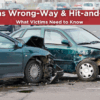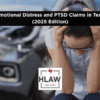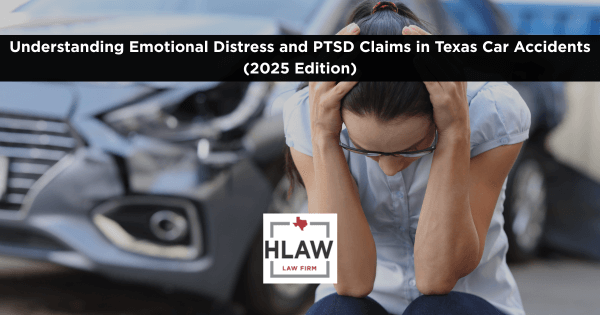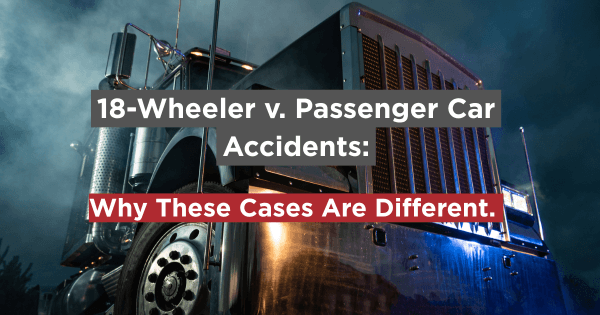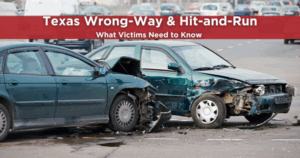
Wrong-way and hit-and-run crashes on Texas highways cause serious injuries and complex legal cases for victims and families.
Wrong-way and hit-and-run crashes remain one of the most devastating and legally complex forms of motor vehicle accidents in Texas. According to the Texas Department of Transportation (TxDOT), wrong-way crashes, though less frequent, are disproportionately fatal, often involving impaired drivers and occurring at night. Hit-and-run incidents, conversely, are far more common, with thousands reported annually across the state, leaving victims without immediate recourse. Recent high-profile cases on major interstates continue to spotlight the lasting impacts on victims—making legal knowledge and strategic recourse essential for individuals and families seeking justice.
What Are Wrong-Way and Hit-and-Run Crashes?
Wrong-way collisions frequently occur at night or on busy highways, often due to impaired driving, driver fatigue, or confusion at exit/entrance ramps. These incidents carry a significantly higher fatality rate compared to other types of crashes. For instance, the Katy Freeway incident where a BMW driving against traffic struck a Cybertruck and caused a multi-vehicle pileup, resulting in fatalities and severe injuries, exemplifies the tragic results. Such events ignite media attention not just for their immediate harm, but also because they often raise questions of criminal intent, intoxication, and liability—none of which may be clear from the outset, as seen in ongoing investigations into why drivers were heading the wrong direction on Texas highways.
Hit-and-run accidents, meanwhile, occur when drivers flee the crash scene, leaving injured victims stranded and complicating both civil and criminal cases. According to the National Highway Traffic Safety Administration (NHTSA), hit-and-run fatalities have been on the rise nationally. In Texas, thousands of hit-and-run incidents are reported annually, ranging from minor property damage to severe injury or death. Recent local news reports underscore how often these cases happen on interstates in the Dallas-Fort Worth region, with ongoing police investigations and a community working to identify and hold offenders accountable for their actions.
Texas Statutes and Legal Duties
- Leaving the Scene of an Accident Involving Injury: A third-degree felony, punishable by 2 to 10 years in prison and/or a fine up to $10,000.
- Leaving the Scene of an Accident Involving Serious Bodily Injury: A second-degree felony, punishable by 2 to 20 years in prison and/or a fine up to $10,000.
- Leaving the Scene of an Accident Involving Death: A second-degree felony, punishable by 2 to 20 years in prison and/or a fine up to $10,000.
Fault, Comparative Negligence, and Insurance
Victim Compensation and Wrongful Death
- Economic Damages: Lost earning capacity, lost inheritance, medical expenses incurred before death, and funeral and burial expenses.
- Non-Economic Damages: Loss of companionship and society, mental anguish, and loss of consortium.
- Exemplary Damages (Punitive): In cases of gross negligence or intoxication, additional damages may be awarded to punish the wrongdoer and deter similar conduct. Gross negligence requires a showing of an extreme degree of risk and the defendant’s actual, subjective awareness of the risk, but conscious indifference to the rights, safety, or welfare of others.
Newsworthy Case Links and Narrative Integration
- Katy Freeway wrong-way death and multi-vehicle collision (October 2025): A vivid example that highlights not only the tragic side of these crashes but also the need for legal diligence in investigating cause, liability, and fair compensation for victims. This story provides ongoing context for discussing criminal penalties, civil remedies, and insurance disputes.
- Fort Worth multi-vehicle wrong-way collision and hospitalizations: Spotlights comparative fault challenges and brings attention to the necessity of timely legal action and comprehensive documentation.
- Dallas/Fort Worth hit-and-run enforcement efforts: Illustrate real-world obstacles in victim identification, evidence collection, and pursuit of both civil and criminal restitution.
Texas Law in Practice: Maximizing Victim Recourse
- Alert Law Enforcement Immediately: Call 911 to report the accident, especially if there are injuries or significant property damage. Request a thorough police report, which provides a factual foundation for claims and is often required evidence for legal recovery.
- Document the Scene: If safe to do so, take photos and videos of the accident scene, vehicle damage, road conditions, and any visible injuries. Collect contact information from witnesses.
- Seek Medical Attention: Even if injuries seem minor, get a medical evaluation promptly. This creates an official record of your injuries and can prevent complications. Follow all recommended treatments.
- Initiate Insurance Notification: Promptly file a claim with your own insurance provider and document every aspect of the incident, injuries, and financial losses. Be cautious when speaking with the at-fault driver’s insurance company.
- Consult a Skilled Texas Personal Injury Attorney: An attorney can ensure evidence is preserved, legal deadlines are met, and all sources of compensation (including UM/UIM benefits) are aggressively pursued. They can also navigate complex comparative negligence arguments.
- Leverage the Two-Year Statute of Limitations: Do not delay in seeking legal review. The two-year deadline for filing a lawsuit is strict, and delays risk lost evidence and missed recovery opportunities.
Supporting Citations and In-Depth Resources
- Texas Transportation Code, Chapter 550 (Accidents and Accident Reports): For the full text and consumer guidance on accident obligations and reporting requirements.
- Texas Civil Practice & Remedies Code, Chapter 16 (Limitations) & Chapter 71 (Wrongful Death): Details on statutes of limitations, victim rights, and wrongful death recovery specifics.
- Texas Department of Transportation (TxDOT) Crash Data: Provides statistics and reports on motor vehicle accidents across Texas, including wrong-way and hit-and-run incidents.
- National Highway Traffic Safety Administration (NHTSA): Offers national statistics and research on accident causes, including factors contributing to wrong-way and hit-and-run crashes.
- Texas Department of Insurance (TDI): Resources on auto insurance policies, including uninsured/underinsured motorist coverage.
Don’t Wait—Protect Your Rights After an Accident
If you or a loved one has been involved in a wrong-way or hit-and-run accident in Texas, don’t face the aftermath alone. Our experienced team at HLAW is dedicated to protecting your rights and guiding you through every step of the process. We offer free, no-obligation case evaluations and consultations—so you can understand your options without any upfront cost. And you never pay us unless we win compensation for you. Take control of your recovery today and contact Howard Lotspeich Alexander & Williams, PLLC to get the justice you deserve.


